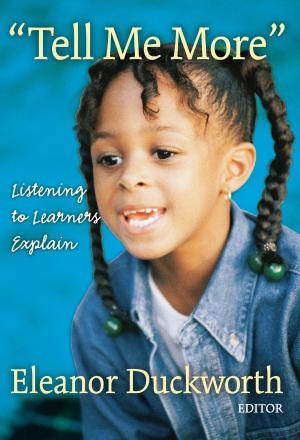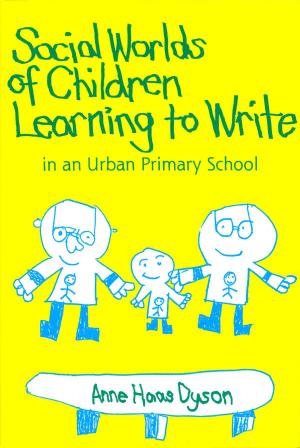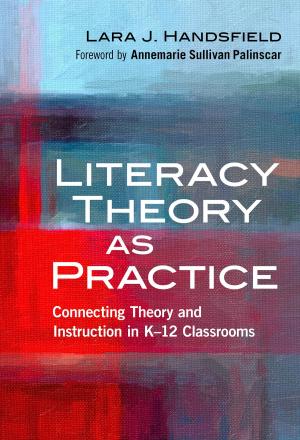"To Remain an Indian"
Lessons in Democracy from a Century of Native American Education
Nonfiction, Reference & Language, Education & Teaching, Educational Theory, Multicultural Education, Social & Cultural Studies, Social Science, Cultural Studies, Native American Studies| Author: | K. Tsianina Lomawaima, Teresa L. McCarty | ISBN: | 9780807776254 |
| Publisher: | Teachers College Press | Publication: | December 15, 2009 |
| Imprint: | Language: | English |
| Author: | K. Tsianina Lomawaima, Teresa L. McCarty |
| ISBN: | 9780807776254 |
| Publisher: | Teachers College Press |
| Publication: | December 15, 2009 |
| Imprint: | |
| Language: | English |
What might we learn from Native American experiences with schools to help us forge a new vision of the democratic ideal—one that respects, protects, and promotes diversity and human rights? In this fascinating portrait of American Indian education over the past century, the authors critically evaluate U.S. education policies and practices, from early 20th-century federal incarnations of colonial education through the contemporary standards movement. In the process, they refute the notion of “dangerous cultural difference” and point to the promise of diversity as a source of national strength.
Featuring the voices and experiences of Native individuals that official history has silenced and pushed aside, this book:
- Proposes the theoretical framework of the “safety zone” to explain shifts in federal educational policies and practices over the past century.
- Offers lessons learned from Indigenous America’s fight to protect and assert educational self-determination.
- Rebuts stereotypes of American Indians as one-dimensional learners.
- Argues that the maintenance of Indigenous languages is a fundamental human right.
- Examines the standards movement as the most recent attempt to control the “dangerous difference” allegedly posed by students of color, poor and working-class students, and English language learners in U.S. schools.
“To Remain an Indian chronicles the resistance, resilience, and imagination of generations of Native American educators. It is a profoundly moving book that highlights the opportunities, and ethical responsibility, that educators have to expand student identities and challenge coercive relations of power in the wider society.”
—Jim Cummins, University of Toronto
“A must read for both seasoned and young scholars, practitioners, and others interested in culturally based education, including the importance of Indigenous languages.”
—John Tippeconnic III, Director, American Indian Leadership Program, Pennsylvania State University
“The development of young children’s logico-mathematical knowledge is at the heart of this text. Similar to the first edition, this revision provides a rich theoretical foundation as well as child-centered activities and principles of teaching that support problem solving, communicating, reasoning, making connections, and representing mathematical ideas. In this great resource for preservice and in-service elementary teachers, Professor Kamii continues to help us understand the implications of Piagetian theory.”
—Frances R. Curcio, New York University
What might we learn from Native American experiences with schools to help us forge a new vision of the democratic ideal—one that respects, protects, and promotes diversity and human rights? In this fascinating portrait of American Indian education over the past century, the authors critically evaluate U.S. education policies and practices, from early 20th-century federal incarnations of colonial education through the contemporary standards movement. In the process, they refute the notion of “dangerous cultural difference” and point to the promise of diversity as a source of national strength.
Featuring the voices and experiences of Native individuals that official history has silenced and pushed aside, this book:
- Proposes the theoretical framework of the “safety zone” to explain shifts in federal educational policies and practices over the past century.
- Offers lessons learned from Indigenous America’s fight to protect and assert educational self-determination.
- Rebuts stereotypes of American Indians as one-dimensional learners.
- Argues that the maintenance of Indigenous languages is a fundamental human right.
- Examines the standards movement as the most recent attempt to control the “dangerous difference” allegedly posed by students of color, poor and working-class students, and English language learners in U.S. schools.
“To Remain an Indian chronicles the resistance, resilience, and imagination of generations of Native American educators. It is a profoundly moving book that highlights the opportunities, and ethical responsibility, that educators have to expand student identities and challenge coercive relations of power in the wider society.”
—Jim Cummins, University of Toronto
“A must read for both seasoned and young scholars, practitioners, and others interested in culturally based education, including the importance of Indigenous languages.”
—John Tippeconnic III, Director, American Indian Leadership Program, Pennsylvania State University
“The development of young children’s logico-mathematical knowledge is at the heart of this text. Similar to the first edition, this revision provides a rich theoretical foundation as well as child-centered activities and principles of teaching that support problem solving, communicating, reasoning, making connections, and representing mathematical ideas. In this great resource for preservice and in-service elementary teachers, Professor Kamii continues to help us understand the implications of Piagetian theory.”
—Frances R. Curcio, New York University















